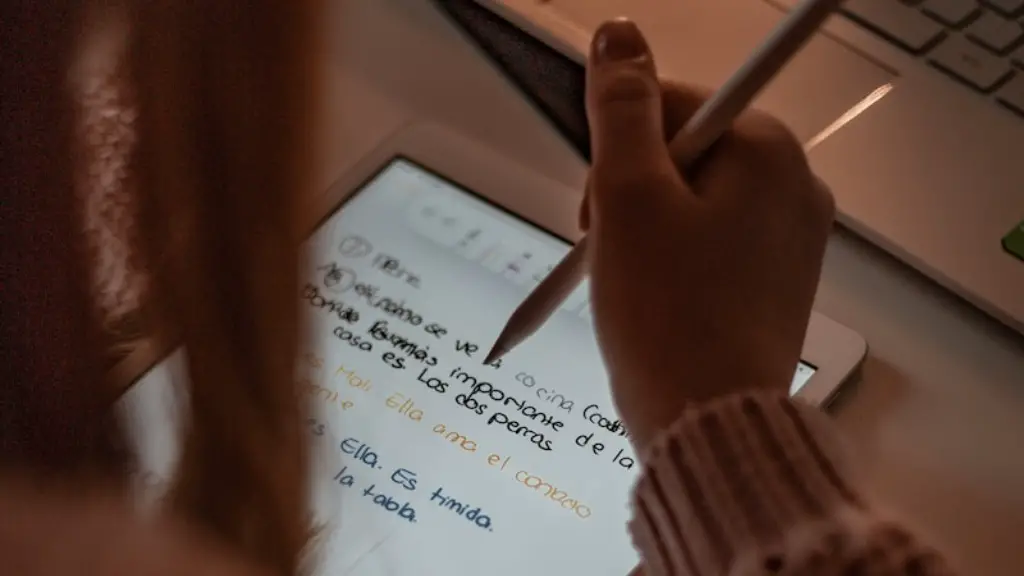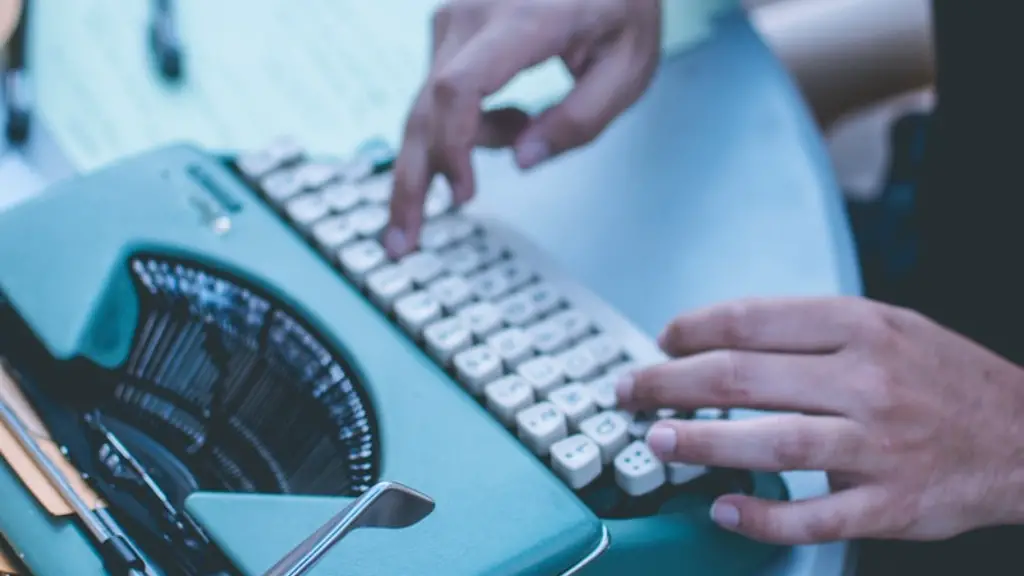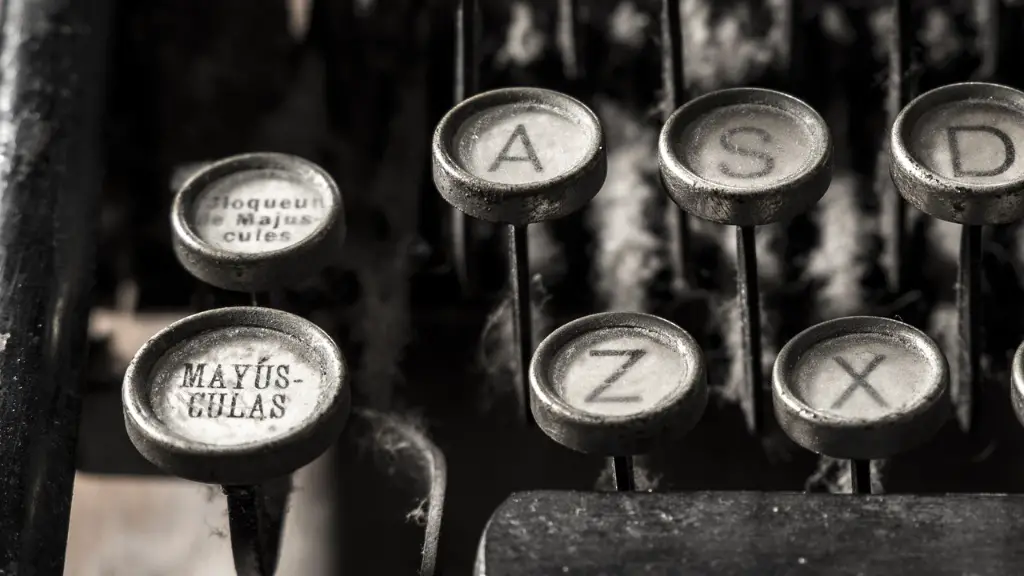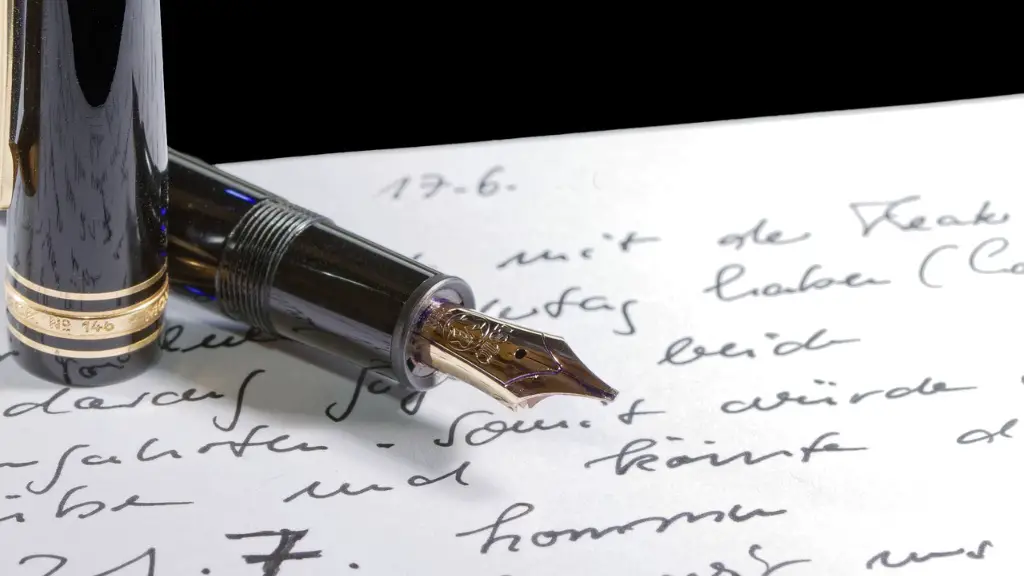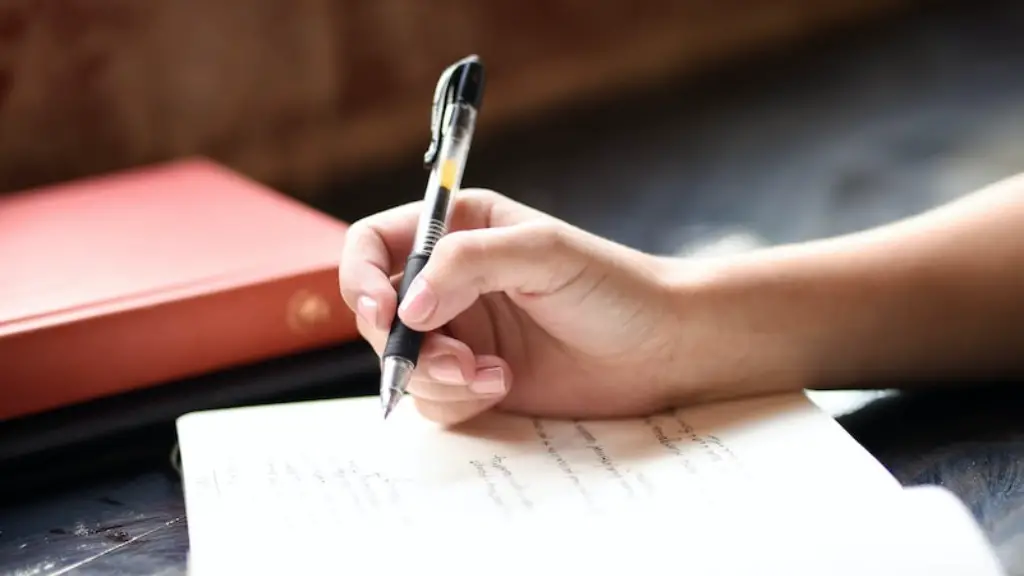Metrical feet are units of poetic metre that are used in traditional poetry. A foot consists of stressed and unstressed syllables, which are arranged in specific patterns. In English poetry, these feet are usually iambs (an unstressed syllable followed by a stressed syllable), trochees (a stressed syllable followed by an unstressed syllable), anapests (two unstressed syllables followed by a stressed syllable), and dactyls (a stressed syllable followed by two unstressed syllables). The number and type of feet in a line of poetry determines the metre of the poem.
In some cases, the pattern of a metrical foot may not be as important as the number of syllables in a line; it is possible to have lines of poetry that follow a strict rhythmic pattern but don’t match the traditional metrical foot patterns. Furthermore, the patterns of metrical feet are affected by the emphasis placed on a syllable and the way it is read. For example, a line of poetry might be composed of two iambs and one trochee, but if the emphasis is placed on the first syllable of the second iamb, it can be transformed into a dactyl.
Poetic metre is one of the primary elements of traditional poetry. It is used to add structure and rhythm to a poem, as well as to indicate the emotional content of a poem. By analysing the metre of a poem, one can gain a deeper understanding of the poem and its themes. Metrical feet can be used to create a certain rhythmic pattern and to add variety to a poem. Furthermore, they can be used to create emphasis and a sense of musicality in a poem.
In order to better understand metrical feet in poetry, it is important to be able to recognise the different metrical feet and the patterns they create. The most commonly used metrical feet in English poetry are iambs, anapests, trochees and dactyls. It is important to note, however, that not all lines of poetry will fit into these traditional metrical foot patterns. The emphasis on a syllable can change the pattern of the metre, and it is also possible to have lines of poetry that do not adhere to any traditional pattern.
Types of Poetic Meters
The traditional metres of English poetry can be divided into two main categories: accentual-syllabic metre and syllabic metre. Accentual-syllabic metre is based on the pattern of stresses and syllables in a line, while syllabic metre is based solely on the number of syllables in a line. Popular examples of accentual-syllabic metres are iambic pentameter and trochaic tetrameter. Examples of syllabic metre include dimeter, trimeter and tetrameter.
Accentual-syllabic metre is the most commonly used metre in English poetry, and it is based on a combination of stresses and syllables. This type of metre is usually divided into feet, with each foot consisting of two or three syllables and at least one stressed syllable. The most common types of feet are iambs, trochees, anapests and dactyls. Lines of poetry can be composed of a variety of feet, and the combination of feet creates the overall pattern of the metre.
Syllabic metre, on the other hand, is based solely on the number of syllables in a line. This type of metre is more flexible than accentual-syllabic metre, as it does not require a regular pattern of stresses. Syllabic metre is often used in free verse poetry and in lyric poetry. Common examples of syllabic metre include dimeter, trimeter and tetrameter.
The Use of Metrical Feet in Poetry
Metrical feet are an important element of traditional poetry, and they can be used to create a sense of structure, rhythm and emotion in a poem. By analysing the metre of a poem, one can gain a deeper understanding of the poem’s content and the poet’s intent. Metrical feet can be used to add variety and complexity to a poem, as well as to create emphasis and a sense of musicality.
Metrical feet can be used to create a specific metre, such as iambic pentameter or trochaic tetrameter. It is important to note, however, that not all lines of poetry need to match a traditional metrical foot pattern. Poets can use metrical feet to create unique and unexpected rhythms, and they can also combine different metrical feet to create complex, multi-layered metres.
Metrical feet can also be used to indicate the emotional content of a poem. By manipulating the metre of a poem, a poet can create a sense of tension or joy, or they can create an atmosphere of solemnity or excitement. Furthermore, the use of metrical feet can add an underlying structure to a poem, and they can help to make a poem more memorable and enjoyable to read.
The Benefits of Studying Metrical Feet in Poetry
Studying metrical feet in poetry can be a great way to gain a better understanding of how traditional poetry works. By understanding the various metres and feet of English poetry, one can gain a greater insight into how a poem’s metre can affect its overall meaning and emotion. Learning about metrical feet can also help one to compose better poems, as one can use them to create interesting and unexpected rhythms and to add emphasis to certain words or phrases.
Furthermore, studying metrical feet can help one to better appreciate traditional poetry. By understanding the subtle nuances of a poem’s metre, one can gain a deeper understanding of the intentions of the poet and the emotions conveyed by the poem. In addition, studying metrical feet can also increase one’s overall knowledge of literature and language, as one can develop a better understanding of the different structures and sounds of English.
The Different Types of Poetic Meters
The traditional metres of English poetry can be divided into two main categories: accentual-syllabic metre and syllabic metre. Accentual-syllabic metre is usually divided into feet, with each foot consisting of two or three syllables and at least one stressed syllable. The most common types of feet are iambs, trochees, anapests and dactyls. Syllabic metre is based solely on the number of syllables in a line, and it is often used in free verse and lyric poetry.
The use of metrical feet can add structure and rhythm to a poem, as well as indicate its emotional content. Metrical feet can be used to create a specific metre, such as iambic pentameter or trochaic tetrameter. They can also be used to create unique and unexpected rhythms, and to add emphasis and a sense of musicality to a poem. Furthermore, studying metrical feet can help one to better appreciate traditional poetry and increase one’s overall knowledge of literature and language.
The Importance of Accents in Metrical Feet
The emphasis placed on a syllable can have a significant impact on the metre of a poem. Accents can change the pattern of a metrical foot and transform it into something completely different. By placing the emphasis on different syllables, a poet can create a sense of tension, excitement or solemnity. The use of accents can also help to make a poem more memorable and enjoyable to read.
In addition, accents are also used to add a sense of musicality to a poem. By varying the emphasis on certain syllables, a poet can create a unique rhythm that is both catchy and memorable. By manipulating the metre in this way, a poet can add depth and complexity to a poem, as well as create a sense of structure and emotion. The use of accents can be a powerful tool that poets can use to convey their intentions and create a strong emotional impact.
The Role of Metrical Feet in Modern Poetry
Metrical feet are still used in modern poetry, although their role is often diminished in favour of other elements such as rhyme and imagery. In free verse poetry, for example, the use of metrical feet is often optional. Nevertheless, metrical feet can still be used to create a sense of structure and rhythm in a poem, as well as create an atmosphere of tension or excitement.
In addition, metrical feet can be used to add an underlying structure to a poem. Even in free verse poetry, metrical feet can be used to create a unique rhythm and to make a poem more enjoyable to read. Furthermore, metrical feet can also be used to add emphasis to certain words and phrases and to create a sense of musicality in a poem.
Conclusion
Metrical feet are one of the primary elements of traditional poetry, and they can be used to create a sense of structure, rhythm and emotion in a poem. There are two main types of metre: accentual-syllabic metre and syllabic metre. Accentual-syllabic metre is based on a combination of stresses and syllables, and the most common types of feet are iambs, trochees, anapests and dactyls. Syllabic metre, on the other hand, is based solely on the number of syllables in a line. Metrical feet can still be used in modern poetry, although their role is often diminished in favour of other elements such as rhyme and imagery.
